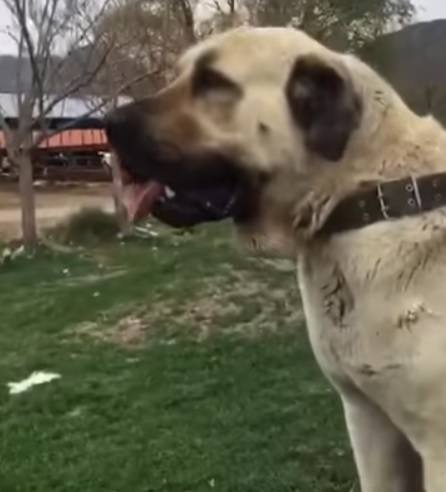When it comes to loyal companions, few can match the dedication of the Anatolian Shepherd. As guardians of both livestock and family, these majestic canines boast a rich history intertwined with the cultures they protect. Towering over the competition, their impressive stature and unyielding spirit make them more than just a pretty face. With a blend of strength and affection, the Anatolian Shepherd not only excels in the field but also holds a special place in our hearts. So, let’s dive into what makes this remarkable breed the ultimate protector and cherished family member.
History of the Anatolian Shepherd
Ah, the Anatolian Shepherd—a breed steeped in history as rich as a double chocolate cake! Originating from the rugged landscapes of Turkey, this magnificent dog dates back thousands of years, where it was bred to protect livestock from lurking predators. Talk about an ancient bodyguard!
Here are some key highlights of the Anatolian Shepherd’s journey through time:
- Ancient Origins: Tracing their roots back to the Hittite Empire, the Anatolian Shepherd was revered by nomadic shepherds.
- Versatile Usage: Beyond livestock, they’ve played roles as hunting companions and family protectors.
- Cultural Significance: In Turkish culture, this breed symbolizes loyalty and guardianship—qualities that still shine through today.
- Global Recognition: With their noble stature and protective nature, the Anatolian Shepherd has made waves far beyond Turkey, finding homes all around the globe.
So, next time you encounter this steadfast guardian, remember: you’re looking at a living piece of history, a breed that blends loyalty with a dash of ancient charisma!
Physical Characteristics of the Anatolian Shepherd
The Anatolian Shepherd is a magnificent breed that not only captivates hearts but also catches eyes with its impressive stature. Here’s a quick rundown of its standout features:
- Size: Adult Anatolian Shepherds typically weigh between 90 to 150 pounds. Yep, these are not your lap dogs!
- Height: Expect them to stand about 27 to 31 inches tall at the shoulder, making them a commanding presence.
- Coat: Their double coat is both practical and striking. It’s usually short on the face and legs, while the body sports a longer, denser layer. Colors range from fawn to brindle, often with facial masks and white markings.
| Characteristics | Description |
|---|---|
| Body Type | Powerful and muscular |
| Ears | Medium-sized, hanging down |
| Tail | Thick at the base, carried high |
In terms of grooming, the Anatolian Shepherd is low-maintenance—perfect for busy families! Despite their rugged exterior, remember that this breed remains gentle with kids, proving that looks can indeed be deceiving. The Anatolian Shepherd combines strength with grace, making them the perfect protector for both livestock and family.
Temperament and Personality Traits
The Anatolian Shepherd is not just a fluffy guardian of farms; it’s a complex character wrapped in fur! Known for its independent streak, this breed showcases some remarkable personality traits:
- Loyalty: The Anatolian Shepherd bonds deeply with its family. They’ll stand by your side like a fluffy bodyguard, ready to protect you when needed.
- Courage: Fear? What’s that? Anatolian Shepherds are born protectors, showing unyielding bravery, especially when it comes to guarding livestock and family.
- Intelligence: These pups boast high intelligence, making them quick learners. However, this cleverness can lead to stubborn streaks, so be prepared for a little negotiation when training!
- Reserved with Strangers: An Anatolian Shepherd may take its time to evaluate newcomers. This “judge-mental” attitude comes from their protective instincts—after all, security first!
In comparison to some breeds that thrive on constant attention, the Anatolian Shepherd often enjoys its solo moments.
| Trait | Anatolian Shepherd | Other Breeds |
|---|---|---|
| Loyalty | ⭐⭐⭐⭐⭐ | ⭐⭐⭐⭐ |
| Protective Nature | ⭐⭐⭐⭐⭐ | ⭐⭐⭐ |
| Intelligence | ⭐⭐⭐⭐ | ⭐⭐⭐⭐⭐ |
| Social with Strangers | ⭐⭐ | ⭐⭐⭐⭐⭐ |
In short, the Anatolian Shepherd melds loyalty and independence, making them an unforgettable companion—if you can handle their royal temperament! 🐾
Training and Socialization Tips
Training an Anatolian Shepherd can be a delightful yet exhilarating adventure. These majestic guardians are highly intelligent but also possess a strong-willed nature. Thus, training should be approached with both patience and confidence.
Here are some valuable tips to ensure your Anatolian Shepherd thrives:
- Start Early: Begin training when your pup is young. Early socialization is crucial!
- Positive Reinforcement: Reward good behavior with treats and praise. It’s all about creating happy associations.
- Consistency is Key: Use consistent commands and routines. This will help your Anatolian Shepherd understand what you expect.
- Engage their Mind: Mental stimulation through puzzle toys or advanced commands keeps your furry friend sharp and obedient.
Sample Training Commands Comparison
| Command | Description |
|---|---|
| Sit | The classic: have them sit and stay still. |
| Stay | Vital for controlling their independent spirit. |
| Come | Handy for keeping them close in open areas. |
Remember, while your Anatolian Shepherd may take its time to respond, make every training session a fun experience. After all, who wouldn’t want a well-behaved guardian for both herd and home?
Health Considerations for the Anatolian Shepherd
When it comes to the Anatolian Shepherd, keeping their health in check is a top priority! These majestic guardians may look tough, but they need a bit of TLC to thrive. Here’s what you should keep in mind:
- Common Health Issues:
- Hip Dysplasia
- Elbow Dysplasia
- Obesity
- Regular Vet Visits: Like humans, these dogs require routine check-ups to catch any sneaky health issues early.
- Vaccinations & Preventative Care: Ensure your Anatolian Shepherd is up-to-date on vaccinations and monthly flea/tick treatments.
- Diet Matters: Feed them high-quality dog food specially formulated for large breeds to keep their weight in check and joints healthy.
- Exercise Needs: Keep your Anatolian Shepherd active with daily exercise; a tired dog is a happy dog!
Keeping an eye on these health considerations will help ensure your Anatolian Shepherd remains a robust and devoted family member for years to come. After all, a healthy dog means a happy herd guardian! 🐾
The Role of the Anatolian Shepherd in Livestock Protection
When it comes to protecting livestock, the Anatolian Shepherd holds the gold medal for ovine guardianship. These dogs don’t just watch the flock; they embody the ultimate guardian spirit, displaying extraordinary skills that can make every farmer beam with pride. Here are some paw-sitive traits that make the Anatolian Shepherd a top-notch protector:
- Instinctive Guardianship: With their keen instincts, Anatolian Shepherds know when something’s amiss. They’re like that friend who always senses drama before it unfolds.
- Size Matters: Their robust frame and powerful build deter predators. A 100-pound Anatolian Shepherd can make intruders think twice!
- Territorial Nature: This breed is fiercely loyal. Once they’ve bonded with their flock, they’ll protect them as if they were their own puppies.
- Independence: These dogs don’t need constant supervision, making them ideal for guarding livestock in open fields. They’ve mastered the art of the solo protector!
In summary, having an Anatolian Shepherd on the ranch is like having a smart, dedicated bodyguard for your livestock. Whether it’s a rambunctious sheep herd or a timid goat family, this breed ensures their safety with flair!
Anatolian Shepherds as Family Pets
The Anatolian Shepherd isn’t just a guardian of livestock; they can be fantastic family pets too! Here’s why this majestic breed is a great companion for your household:
- Loyal Protectors: Anatolian Shepherds are fiercely loyal. They form strong bonds with their families and will go to great lengths to protect their loved ones.
- Gentle Giants: Despite their larger-than-life stature, these dogs are known for their gentle demeanor with children. They are known to supervise playtime like a vigilant babysitter.
- Low Maintenance: Their grooming needs are minimal compared to their fluffy counterparts. Just a regular brushing will keep their coat in check.
- Independent Thinkers: They’re not overly needy and can entertain themselves. You won’t have a shadow following you around all day!
| Trait | Anatolian Shepherd | Labrador Retriever |
|---|---|---|
| Size | Large (80-150 lbs) | Medium to Large (55-80 lbs) |
| Temperament | Protective and Independent | Friendly and Outgoing |
| Exercise Needs | Moderate (daily walks suffice) | High (needs more playtime) |
| Family Orientation | Excellent with children | Great with families |
In summary, the Anatolian Shepherd can certainly wear many hats—herder, protector, and a loving family pet! Why not give them a chance to show you just how wonderful they can be?
Grooming and Maintenance Requirements
Keeping your Anatolian Shepherd looking sharp is a piece of cake—unless it’s cake day for the dog! Here’s the scoop on grooming this magnificent creature:
- Coat Type: The Anatolian Shepherd has a dense double coat. This means they shed like a celebrity in a magazine shoot during spring and fall. Average brushing once a week, more during shedding season, should do the trick.
- Bathing: A bath every couple of months keeps their coat clean and smelling fresh. Don’t overdo it; too many baths can strip natural oils.
- Nail Clipping: Don’t let those claws grow wild! Trim their nails every 4-6 weeks to keep your floors scratch-free and your dog comfortable.
- Ear Care: Check their ears weekly. A quick wipe with a damp cloth can prevent dirt buildup—perfect for your Anatolian Shepherd to have a healthy listen!
- Dental Hygiene: If you love that canine smile, brush their teeth a few times a week.
Remember, a well-groomed Anatolian Shepherd is a happy one! Embrace the grooming routine, and your furry friend will show their appreciation through slobbery kisses and wagging tails.
Common Misconceptions About the Anatolian Shepherd
The Anatolian Shepherd is a magnificent breed often surrounded by myths and misunderstandings. Let’s clear the air with some delightful debunking!
The Myths vs. The Facts
| Myth | Fact |
|---|---|
| They are aggressive towards people. | While protective, Anatolian Shepherds are primarily gentle with their families. Early socialization helps them differentiate between friend and foe. |
| They’re just big, fluffy dogs. | Anatolian Shepherds pack a serious punch when it comes to guarding. Their size is matched by intelligence and work ethic. |
| They can live anywhere, even in a tiny apartment. | These dogs thrive in spacious environments with room to roam and display their prowess. Urban living? Not so much! |
The Bottom Line
In summary, the Anatolian Shepherd is more than just a loyal protector; it’s a heartwarming companion when understood correctly. Dispelling these misconceptions allows owners to appreciate their unique traits and bond with their Anatolian Shepherds on a deeper level.
Common Misconceptions About the Anatolian Shepherd
Ah, the Anatolian Shepherd! A magnificent guardian of livestock and a gentle giant of the family. However, misconceptions abound about our fluffy friend. Let’s tackle a few of these myths head-on:
- Myth 1: They’re Unfriendly
Truth: Anatolian Shepherds are often misjudged as aggressive. In reality, these dogs are loyal protectors; they just take time to warm up to new faces! - Myth 2: They Don’t Need Exercise
Truth: While they excel in guarding duties, these dogs require pretty hefty daily exercise. A bored Anatolian shepherd can turn into a mischievous one! - Myth 3: They Can’t Be Trained
Truth: Training an Anatolian Shepherd is possible and quite rewarding. With positive reinforcement, you’ll find that they’re eager to learn and please. - Myth 4: They’re Just Farm Dogs
Truth: While they shine as livestock guardians, Anatolian Shepherds thrive as family pets too—with the right socialization.
Keep these in mind, and you’ll appreciate the true character of your Anatolian Shepherd! 🐾
Frequently Asked Questions
What is the Anatolian Shepherd’s primary role?
The Anatolian Shepherd, often seen as the noble guardian of both livestock and family, plays a pivotal role as a protector. These gentle giants were originally bred in Turkey to guard flocks against predators, showcasing their unwavering loyalty and remarkable intelligence. Their natural instinct to protect and their assertive demeanor make them the perfect candidates for not just safeguarding sheep, but also securing your heart and home from any unwelcome intruders.
Are Anatolian Shepherds good with children?
Absolutely! The Anatolian Shepherds are like the gentle giants of the dog world, embodying patience and love when it comes to kids. They often bond fiercely with their little humans and can be incredibly protective. However, like any family member, proper socialization and training from a young age are key. When raised with children, these dogs will play the role of both guardian and fun-loving buddy, ensuring that childhood adventures are safe and joy-filled!
Do Anatolian Shepherds need a lot of exercise?
While they might seem like couch potatoes with their majestic stature and calm demeanor, don’t be fooled! Anatolian Shepherds require daily exercise to keep their massive muscles and lively spirits in check. Think daily walks, play sessions, and opportunities to stretch their legs in a secure environment. They thrive best when they have space to wander, explore, and patrol their territory— after all, a bored Anatolian Shepherd is just a recipe for trouble!
How should I train my Anatolian Shepherd?
Training an Anatolian Shepherd can be a delightful yet challenging endeavor! These dogs are intelligent and independent thinkers, which means they may not always follow commands with the enthusiasm of a Golden Retriever. Positive reinforcement methods, such as treats and praise, work wonders! Consistency and patience are paramount, as is beginning training early. You want to cultivate a bond built on trust so your Anatolian can feel confident in their role as both protector and best friend.



